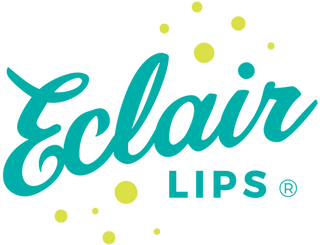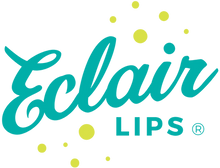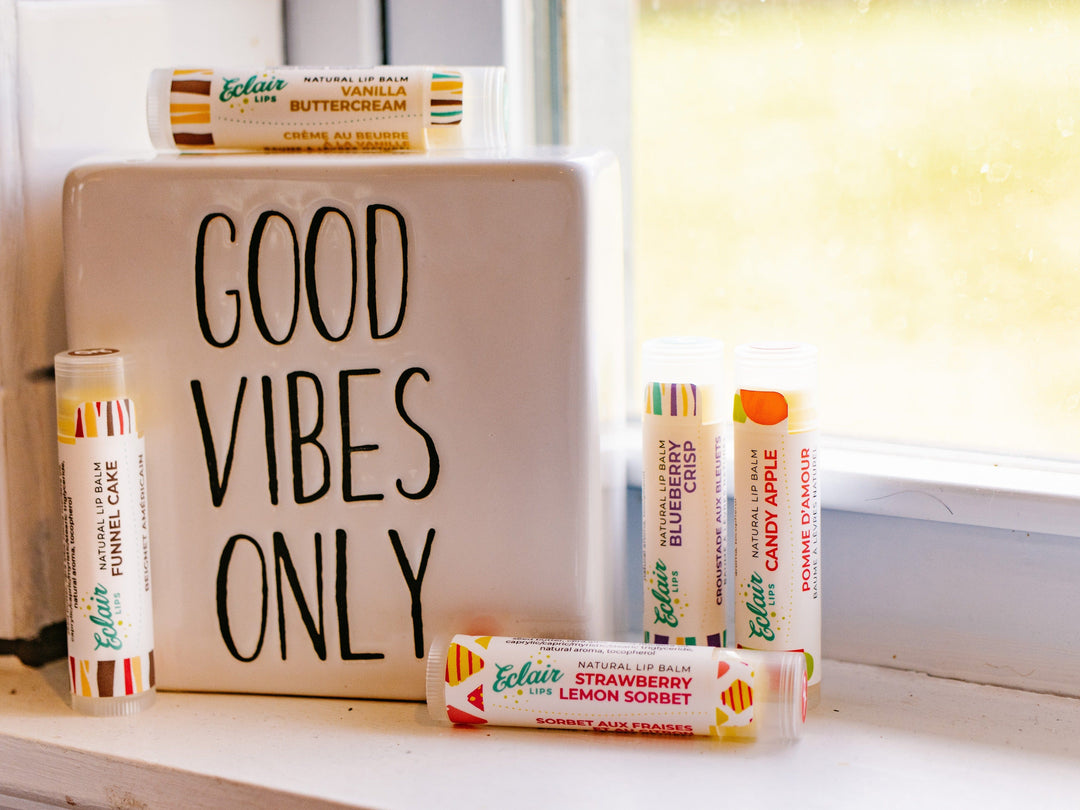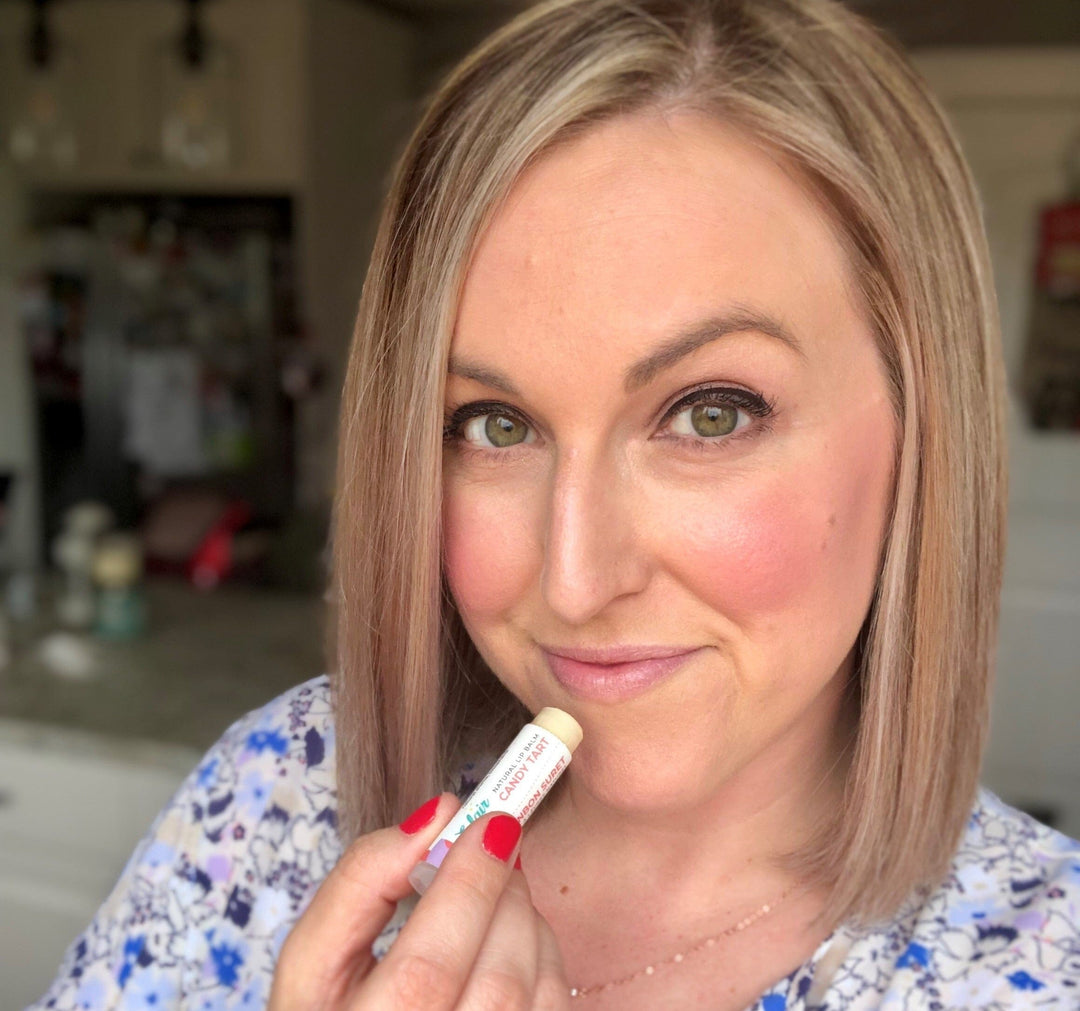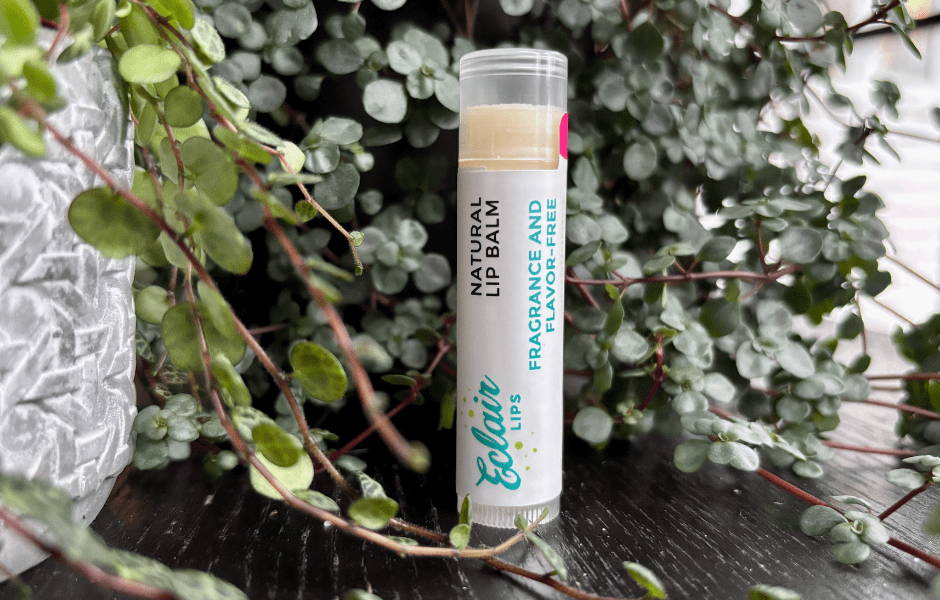The Best Lip Balm for Pigmented Lips
Your Guide to Lip Care That Works With Your Natural Colouring

The best lip balm for pigmented lips is one that works with your natural colouring, not against it. Whether you have naturally darker lips that come with your skin tone, or your lips have developed deeper pigmentation over time from sun exposure or other factors, you deserve lip care advice that actually acknowledges your reality.
Too much skincare and beauty content assumes everyone starts with pale pink lips, and that's simply not true.
The best lip balm for pigmented lips isn't about changing how your lips look. It's about keeping them healthy, comfortable, and well-hydrated while working with the natural richness that's already there.
Whether your lips are deep brown, purple-toned, or anywhere in between, the goal stays the same: soft, smooth lips that feel good and look their best.
This guide walks through what makes a great balm for deeper lip tones, which ingredients work best, and how to choose products that complement your natural pigmentation instead of fighting against it. No weird "lightening" advice here, just straightforward care that makes sense.
Quick Takeaway
- Pigmented lips need the same basics as any other lips: consistent moisture, gentle ingredients, and protection from sun and wind
- Look for rich, nourishing formulas with cocoa butter and beeswax that create a lasting protective barrier
- Tinted balms can enhance your natural colour beautifully without looking like obvious makeup
- Dryness might show up differently on pigmented lips (duller appearance or greyish cast rather than pale and ashy)
Contents
Understanding Pigmented Lips
Pigmented lips can mean different things. For some people, it refers to naturally darker lip colouring that comes with deeper skin tones, where melanin creates lips that are significantly richer than the typical pale pink shown in most beauty advertising.
For others, it might mean pigmentation changes that developed over time from sun exposure, hormonal shifts, smoking, or aging. Both situations are completely normal, and both deserve good care that actually works.
Research on skin of colour recognizes that melanin distribution varies widely across different skin tones, and this variation is healthy and natural. Some people have lips much darker than their facial skin while others have lips closer in tone, and neither pattern indicates anything wrong. It's just genetics doing its thing.
One key difference worth understanding is that melanin-rich lips may show dryness differently than lighter lips. Instead of looking pale or ashy when dry, pigmented lips might appear duller or develop a greyish cast.
Cracking and peeling look the same across all skin tones, but the visual cues that your lips need moisture can be subtler, which is why consistent hydration matters even when your lips don't look obviously chapped.

Why Hydration Matters for All Lip Tones
Dermatological research shows that keeping lips well-moisturized benefits all skin tones equally. When lips are properly hydrated, they look plumper, smoother, and more even in colour regardless of their base tone.
This doesn't mean hydration will lighten pigmented lips (and why would you want that anyway?), it just means healthy, hydrated tissue looks better than dry, flaky tissue.
Pigmented lips also handle sun exposure differently than you might expect. While darker pigmentation does offer some natural UV protection, it's not nearly enough to skip sun care entirely.
The lower lip especially gets significant direct sun exposure, and research confirms that unprotected UV exposure can lead to hyperpigmentation, uneven darkening, and in severe cases, actinic cheilitis. Sun damage adds up over time, so protecting your lips matters regardless of how much melanin they have.
What Makes a Great Balm for Pigmented Lips
The best lip balm for pigmented lips starts with a solid foundation of nourishing ingredients. You want a formula that delivers deep hydration, stays put long enough to actually work, and complements your natural lip tone instead of washing it out or leaving a chalky cast.
Texture matters quite a bit here. A balm that's too light or oil-heavy might feel nice for a few minutes, but it won't provide the lasting protection that keeps your lips comfortable all day.
Look for something with enough body to create a real barrier against moisture loss, which usually means a formula built on waxes and butters rather than just oils.
Cocoa butter is particularly excellent for pigmented lips. It has a rich, creamy texture that melts smoothly without feeling greasy, and its natural brown colour blends beautifully with deeper lip tones.
Unlike some lighter butters that can leave a whitish cast, cocoa butter works with your pigmentation instead of against it. It also provides serious staying power, so you're not constantly reapplying every twenty minutes.
The balm should feel comfortable without being sticky or draggy. If it tugs when you apply it, that's a sign there's too much wax and not enough slip.
If it slides right off or feels like it's melting into the surrounding skin before it can do any good, there's probably too much oil. The sweet spot is a formula that glides on easily, forms a protective cushion, and stays present on your lips for at least an hour or two.
For daily use, a fragrance-free option works well because it won't compete with other scents you're wearing and it's less likely to irritate sensitive skin.
If you enjoy a bit of flavour, that's fine too, just make sure it's not so strong that you're tempted to lick it off constantly (which only makes dryness worse).
Tinted Options That Actually Work
Tinted balms can be wonderful for pigmented lips because they enhance your natural colour rather than covering it up. Look for sheer tints that add a hint of depth or shine without looking like full-coverage lipstick.
The right tinted balm should make your lips look like a richer version of themselves, not like you're wearing someone else's colour.
Berry and plum tints often add beautiful dimension to pigmented lips. A shade like raspberry or pomegranate can deepen your natural tone in a way that looks sophisticated and polished without being obvious.
For something more neutral, brown-toned tints blend seamlessly and give a put-together look that works for professional settings.
The beauty of tinted balms is that they're forgiving. Even if the shade isn't a perfect match, it blends with your natural colour to create something that works. You can start with a light layer and build up if you want more intensity, which gives you control over how subtle or dramatic you want to go.

Key Ingredients That Work Best
When you're choosing a lip balm, the ingredient list tells you almost everything you need to know. Here are the ingredients that work particularly well for pigmented lips.
Cocoa butter sits at the top of the list for good reason. It's rich, protective, and has a natural affinity for melanin-rich skin.
Packed with fatty acids that seal in moisture and create a lasting barrier against dry air and wind, cocoa butter also has a subtle chocolate scent in its unrefined form (though many balms use deodorized versions for a neutral finish).
Coconut oil is lightweight enough to sink in quickly but still provides good hydration. It melts right at skin temperature, so it feels smooth and comfortable without being heavy. Coconut oil also has natural antimicrobial properties, which can be helpful if your lips are prone to cracking or minor irritation.
Beeswax gives a balm its structure and staying power. It creates a protective layer that helps lock moisture into your lips and is naturally water-resistant, which means your balm won't disappear the second you take a sip of water or step out into humid weather.
If you prefer a vegan option, look for balms with candelilla or carnauba wax instead.
Natural vitamin E (listed as tocopherol on ingredient labels) serves two purposes. First, it acts as an antioxidant that helps keep the oils and butters in your balm fresh.
Second, it provides gentle skin-conditioning benefits that can be particularly good for lips that have seen a lot of sun exposure, since antioxidants help support healthy skin.
If you're interested in tinted options, look for balms that use mineral pigments like iron oxides or mica. These give colour without harsh synthetic dyes, and they tend to look more natural on pigmented lips. Tinted balms with sheer, buildable coverage let you control the intensity, so you can go subtle for daytime or layer it up for evening.
SPF Considerations
One more ingredient worth mentioning is SPF, though we should be clear that Eclair Lips doesn't currently offer SPF products (more on that in a moment). If you spend a lot of time outdoors, especially in direct sun, consider adding a separate SPF lip balm to your routine.
Dermatological research emphasizes that lips are vulnerable to sun damage. The lower lip in particular receives significant UV exposure and has less melanin for natural protection, making it prone to burns and potential long-term damage.
Sun protection matters for all skin tones, and cumulative UV exposure can lead to uneven pigmentation or dryness over time.
Why Eclair Lips doesn't offer SPF: Creating an effective SPF lip balm is complex. In Canada, any lip balm claiming SPF becomes a drug product requiring Health Canada approval, extensive testing, and a Drug Identification Number.
We'd rather focus on making excellent moisturizing balms than cut corners on sun protection. If you need SPF, look for dedicated SPF lip balms from brands that specialize in sunscreen formulation and can properly test and verify their claims.

Myths and Mistakes to Avoid
Let's clear up some common misconceptions that make choosing lip care more confusing than it needs to be.
Myth: Pigmented lips need lightening or correction. This one shows up everywhere, from beauty forums to product marketing. The truth is straightforward: naturally pigmented lips don't need fixing, brightening, or bleaching.
What they need is hydration, protection, and maybe a little enhancement if that's your thing. Any product that promises to "correct" your natural lip colour is selling you a solution to a problem that doesn't exist.
Myth: Dark lips are always a sign of poor health. Sometimes lip darkening can indicate dehydration, sun damage, or smoking. But most of the time, pigmented lips are just genetics.
People with deeper skin tones naturally have more melanin in their lips, just like they do in the rest of their skin. That's not unhealthy, it's biology. If your lips are soft, smooth, and evenly coloured, they're doing great.
Myth: You can't wear bright lip colours if you have pigmented lips. Completely false. Pigmented lips can wear any colour they want, though you might need to adjust your technique.
Brighter shades often show up beautifully on deeper lips with a bit of layering or a tinted balm as a base. The key is finding formulas with good pigment payoff, not avoiding colour altogether.
Mistake: Using harsh exfoliants to scrub away darkness. This doesn't work and can actually make things worse. Aggressive scrubbing irritates the delicate skin on your lips, which can trigger more pigmentation as your skin tries to protect itself.
If you want to exfoliate, use a gentle option with fine sugar and soothing oils, and only do it once a week at most.
Mistake: Skipping sun protection because darker skin doesn't burn. While melanin does provide some natural sun protection, it's not enough on its own. Lips have thinner skin than the rest of your face, and the lower lip especially gets significant UV exposure.
Sun damage adds up over time, leading to dryness, uneven colour, and potentially serious issues down the line.
The biggest takeaway here is simple: healthy, well-hydrated lips look their best regardless of their natural pigmentation. Focus on that, not on trying to change your colour.
Comparing Your Options
Not all lip balms are created equal, and what works beautifully for one person might not suit another. Here's how different formulas stack up for pigmented lips.
| Formula Type | Best For | Texture | Staying Power | Visual Effect |
|---|---|---|---|---|
| Clear balms | Daily maintenance, versatile wear | Smooth, protective | 1-2 hours | Keeps lips hydrated without adding colour |
| Tinted balms | Enhancement, polished look | Creamy, slightly glossy | 1-2 hours | Deepens natural tone, adds dimension |
| Cocoa butter-based | Deep moisture, comfort | Rich, melts smoothly | 2-3 hours | Blends naturally with pigmented lips |
| Coconut oil-heavy | Lightweight feel, summer use | Light, quick-absorbing | 30-60 minutes | Fresh, comfortable but needs frequent reapplication |
Clear vs Tinted Balms: Clear balms are your everyday workhorses. They provide moisture and protection without adding any colour, which makes them perfect for casual wear, sleeping, or layering under other lip products.
A good clear balm keeps your lips soft and comfortable all day without requiring any thought about whether the colour suits your outfit or the occasion.
Tinted balms add enhancement rather than coverage. They're not full-coverage lipstick, they're more like a sheer wash of colour that deepens and enriches your natural tone.
For pigmented lips, tinted balms work particularly well because they complement your existing colour instead of trying to cover it. A berry or plum tint might add depth and dimension, while a neutral or brown-toned balm can make your lips look polished without being obvious.
Base Ingredient Differences: Balms built on cocoa butter tend to have that rich, protective feel that works beautifully with deeper lip tones. They melt smoothly, blend naturally, and provide serious staying power.
Shea butter-based balms are softer and fluffier, which feels luxurious and absorbs quickly, but they don't always provide the same staying power. They work well if you prefer a lighter feel or if you apply balm frequently throughout the day.
Coconut oil-heavy formulas are very light and quick-melting, which makes them great for summer or for people who don't like the feeling of anything heavy on their lips. The trade-off is that you'll reapply more often since coconut oil absorbs and wears off faster than waxier formulas.
Real-World Scenarios
Different situations call for different approaches. Here's what works in practice.
Daily Maintenance: For your regular weekday routine, you want something easy and reliable. A clear, fragrance-free balm keeps your lips hydrated without adding fuss.
Apply it in the morning, after lunch, and before bed, and that's usually enough to prevent dryness and keep your lips comfortable. If you're out in cold or windy weather, reapply more often since harsh conditions strip moisture faster.
Professional Appearance: When you need to look put-together for work or important meetings, a tinted balm hits the sweet spot between polished and low-maintenance.
It adds just enough colour to look intentional without being distracting. Tinted balms also tend to fade gracefully throughout the day, so you don't get that harsh line of demarcation that can happen with lipstick.
Evening Enhancement: For nights out or special occasions, layer a richer tinted balm over your usual clear base.
The extra moisture keeps your lips comfortable even if you're talking or laughing for hours, and the deeper colour adds drama without requiring constant touch-ups. If you want more intensity, you can also use a tinted balm as a base under regular lipstick since it provides a cushion of moisture and helps the colour go on more evenly.
Seasonal Adjustments: Your lip care can shift with the seasons just like the rest of your routine. In winter, you might lean toward berry or plum tints that feel cozy and complement darker clothing.
In summer, lighter or neutral tints work well with brighter outfits and give a fresh, easy look. The nice thing about tinted balms is that they're forgiving enough to work across different seasonal palettes without looking out of place.
Gentle Exfoliation for Pigmented Lips
If your lips feel rough or flaky, gentle exfoliation can help smooth things out and let your regular balm work better. But exfoliating won't change your natural pigmentation, and scrubbing too hard or too often can irritate your lips and make them worse.
An exfoliating balm once a week is usually plenty. Look for something with fine sugar granules and nourishing oils that buff away dead skin gently without scratching or tearing.
Apply it with light circular motions, rinse with lukewarm water, and follow up immediately with your regular moisturizing balm while your lips are still slightly damp (this helps seal in hydration).
If you notice your lips getting more pigmented or irritated after exfoliating, you're probably doing it too often or pressing too hard. Back off and let your lips recover with gentle, consistent moisture instead.
Shopping for the Right Formula
When you're looking at ingredient lists, here's what to prioritize for pigmented lips:
- Rich butters (cocoa butter, shea butter) for lasting moisture
- Protective waxes (beeswax, candelilla wax) for staying power
- Nourishing oils (coconut oil, jojoba oil) for smooth application
- Mineral pigments (iron oxides, mica) for natural-looking tints
- Antioxidants (vitamin E) for skin support
What to be cautious about:
- Heavy fragrances that might irritate sensitive lips
- Menthol or camphor (these can feel cooling but may dry lips out)
- Super light, oil-only formulas that don't have enough staying power
- Products that leave a white or ashy cast on deeper skin tones
The best way to know if a balm works for your pigmented lips is to test it. Apply it to clean lips and see how it feels after an hour or two. Does it still feel present, or has it completely disappeared?
Does it blend naturally with your lip colour, or does it look chalky or obvious? A good balm should feel comfortable, last a reasonable amount of time, and make your lips look healthy and hydrated.

Building Your Lip Care Routine
A solid lip care routine for pigmented lips doesn't need to be complicated. Start with these basics and adjust based on what your lips tell you they need.
Morning: Apply a protective balm before you start your day. If you're wearing makeup, this can go on first to create a smooth base. If you want a bit of colour, use a tinted balm instead of or over your clear balm.
Throughout the day: Reapply whenever your lips feel dry or tight. Keep a balm at your desk, in your bag, and in your car so you're never stuck without one. In harsh weather (cold wind, hot sun, dry indoor heating), you'll probably need to reapply more often.
Evening: Before bed, apply a generous layer of your richest balm. Your lips do a lot of repair work overnight, so giving them extra moisture while you sleep helps them recover from the day's exposure to weather, food, drinks, and whatever else they encountered.
Weekly maintenance: Once a week, use a gentle exfoliating balm to remove any buildup of dead skin. This isn't about changing your pigmentation, it's just about keeping the surface smooth so your regular balm can penetrate better.
If you spend significant time outdoors, add a separate SPF lip balm to your routine and reapply it every couple of hours while you're in the sun. Sun protection is boring but important, especially for the lower lip which takes the most direct UV exposure.
Frequently Asked Questions
Is tinted balm natural-looking on pigmented lips?
Yes, especially when you choose sheer formulas with buildable colour. Tinted balms are designed to enhance rather than cover, so they work with your natural lip tone.
On pigmented lips, a berry or plum tint adds depth and dimension without looking like obvious makeup. Start with a light layer and build up if you want more intensity.
What colour tint enhances my tone?
It depends on your undertone and what effect you want. For warm undertones, brown or copper-toned tints look natural and rich. For cool undertones, berry or plum shades add a nice pop.
If you're not sure of your undertone, neutral or rosy tints are safe bets that flatter most pigmented lips. The beauty of tinted balms is that they're forgiving, so even if the shade isn't a perfect match, it blends with your natural colour to create something that works.
Do I need special care for pigmented lips?
Not really. Pigmented lips need the same basics as any other lips: regular moisture, gentle ingredients, and protection from sun and wind.
The only difference is that you might want to pay attention to how certain products look on your specific colouring. A balm that adds a whitish cast might be more noticeable on darker lips, so you'd lean toward formulas with cocoa butter or neutral oils instead.
What's best for daily wear?
A simple, fragrance-free balm or a sheer tinted option depending on your preference. For daily wear, you want something you can apply quickly and won't think about for the rest of the morning. Look for good staying power so you're not reapplying every hour, and a texture that feels comfortable without being sticky or heavy.
Can I wear bright lipstick over pigmented lips?
Absolutely. You might need to use a bit more product or layer it to get full opacity, but there's no reason pigmented lips can't wear bright colours.
Some people like using a tinted balm as a base to help the colour glide on smoothly and last longer. Others prefer a lip liner to define the edges and prevent feathering. Experiment and see what works for you.
Does exfoliating help with uneven pigmentation?
Gentle exfoliation can help if you have surface dryness or flaky skin that's making your lips look duller. An exfoliating balm once a week smooths things out and helps your regular balm absorb better.
But exfoliating won't change your natural pigmentation, and scrubbing too hard or too often can irritate your lips and trigger more pigmentation as your skin tries to protect itself.
How do I know if my lips need more moisture or if there's an underlying issue?
If your lips feel dry, tight, or flaky, and a good balm doesn't help within a week or two, it might be worth checking in with a doctor. Persistent dryness can sometimes signal dehydration, vitamin deficiencies, or allergic reactions to products you're using.
Most of the time though, consistent hydration with a quality balm is all you need.
Are natural or synthetic balms better for pigmented lips?
Both can work well. Natural balms with cocoa butter, beeswax, and plant oils are gentle and effective for most people. Synthetic formulas might offer longer wear or more vibrant tints.
Choose based on your preferences and any sensitivities you have. What matters most is that the balm keeps your lips hydrated and comfortable without causing irritation.
The Bottom Line
The best lip balm for pigmented lips keeps your lips healthy, comfortable, and well-hydrated while celebrating the natural colour that's already there. Whether you prefer a simple clear balm for daily maintenance or a tinted option that adds enhancement, choose rich, nourishing ingredients that work with your skin tone.
With the right care, your lips will stay soft, smooth, and looking their best.
More Lip Balm Guides
- How to find the most hydrating lip balm for your needs
- Understanding which lip balm ingredients really work
- Choosing natural lip balm that actually works
- Finding lip balm when you have sensitive lips
- Discovering flavored lip balms you'll love
- Protecting your lips during winter weather
- Why fragrance-free lip balm matters
- What dermatologists say about lip balm
- Navigating drugstore lip balm options
- A comprehensive guide to choosing lip balm
Explore Our Online Lip Balm Shop
At Eclair Lips, we believe the best lip balm is the one you love to use every day. Every balm is handmade in small batches with natural ingredients, playful dessert-inspired flavours, and a texture we obsessed over until it felt just right. We ship anywhere in Canada and the US, so whether you are in Toronto, Halifax, Las Vegas, or Chicago, you can stock up on your favourite lip balm Canada style, right from your couch.
In our shop, you will find tinted lip balm for a hint of colour, fragrance free balm if your lips are on the sensitive side, gentle lip scrubs to keep everything smooth, and even lip balm for kids when you want something safe and fun to share. Looking for variety? Try a lip balm set to explore new flavoured lip balm favourites or to give as a gift.
Our brand is built on honesty, humour, and heart, and that means no scare tactics, no overblown claims, just lip care that feels good and makes you smile.
Take a peek at our collections here: https://eclairlips.com.
Disclaimer: The information in this post is meant to be helpful, and while we love dorking out about lip balm, it isn't medical advice. Everyone's needs are different, so if you have concerns about allergies, sensitivities, pregnancy, or a medical condition, please check with a healthcare professional before trying new products.
